God of war of the Russian Imperial Army of the First World War. Some features of the combat use of Russian artillery. Part of 2
Despite this, the Russian artillerymen fought effectively — even while fighting a counter-battery battle with a superior enemy, defending their infantrymen. An artillery officer recalled how, during the Warsaw-Ivangorod operation 1914, the 4's heavy cannon guns of the Germans fired at the Russian trenches, and suddenly was suddenly covered with a Russian field battery. The German battery ceased to exist, and the Russian battalion commander, having visited the place of her death, took for memory an officer’s helmet removed from a German grave, torn from the head of an enemy artilleryman with a fragment of a scalp and several letters and postcards [Ververn B.V. 6-I battery. T. 1. C. 57].
10. Lunch at the carriage
And in the battle of Balumutivka-Rusty 1915, the 6-I and 7-I Don Cossack 26 batteries of April entered into a competition with four Austrian batteries (including heavy ones) and silenced them. The artillery of the enemy issued its location with dust columns between the village of Balamutivka and Dezus-Snouch - and the Don team opened fire. Moreover, a huge cloud of dust and smoke was observed on the enemy's heavy battery - the charging box was blown up and the searchlight was damaged, and the battery did not shoot anymore during the battle.
As long as enemy artillery could organize a fire curtain in front of the defense of its infantry, the attacks of the Russian infantry were of little success. Accordingly, the Russian artillery faced the task of not only destroying the enemy’s machine guns, but also suppressing the fire of enemy batteries. Thus, at the final stage of the Battle of Galicia, the Russian 27 th Infantry Regiment of the Vitebsk Infantry Division of the 7 Infantry Division, which was in the vanguard, attacked the Austrians, who were well entrenched overnight in positions covering the approaches to Tomashov. The Austrians behind the center of their defensive position positioned an artillery battery, which impeded the advance of the Russian infantry. Then the commander of the Russian infantry regiment ordered the mortar battery supporting him to crush the Austrian artillery - which was successfully completed. After that, the 27 Infantry Regiment knocked out the Austrians from their position and, pursuing them, first broke into Tomashov.
The gunners had an impact on the outcome of entire military operations. Thus, the work of the 2 of the Finnish rifle artillery battalion in the 27 battle of August 1914 led to the fact that the advancing German division with stronger artillery was not only stopped by the accurate 3's Russian batteries (2 field and one mountain), but also made the enemy believe in the presence of large Russian forces. The German field artillery could not even open fire for a whole day — the battalion batteries operated so brilliantly and tactically. This resulted in insignificant losses of the Russian riflemen, the withdrawal of the German division from the town of Lyk and the possibility of a quick detachment from the enemy of our rifle brigade and the rest of the 22 Army Corps following behind it. This battle eased the pressure of the Germans on the left flank of the 1 Army and enabled the units of the 22 Corps to concentrate on further combat missions.
Russian artillerymen acted well under tactically difficult conditions. Thus, the ability of even heavy field artillery to move quickly in mountainous conditions was tested in February and March 1915 in the Carpathians (Vyshkov Pass, Volosyans, Lihobori) - when the heavy battery of the 3 Siberian rifle artillery brigade passed at night through Vyshkov Pass , passed through the most terrible mountain roads (only in places hastily tampered with wooden flooring) and went out into the valley of the r. Sviki.
11., 12 Front in Galicia
The Russian artillerymen tried to compensate for the shortage in the number of barrels with the quality of firing, the introduction of tactically progressive methods of using guns and the rate of fire. For example, the battery of Captain Sokolov from the 1 heavy (!) Artillery brigade in the battles near Angerg gave - a gun to 9 shots, and a howitzer - to 4 shots per minute.
13. Battery artillery observatory
In the Russian army, earlier than in any other army participating in the First World Divisional Artillery (according to 1-2 batteries) they began to subordinate infantry regiments, which made it possible to support the attack of each battalion with 2-4-guns. Infantry interaction with artillery improved. Artillery became the conductor of the infantry. The artillery preparation of the infantry attack began to be carried out systematically, becoming an important key to a successful offensive.
Russian gunners have made a lot of new in the question of the methodology of using artillery. Various schemes of artillery fire (fire raid, fire curtain, fire breakthrough), types of artillery preparation and forms of infantry fire support (fire shaft) were developed. For the firing shaft, the artillery had to create a line of fire moving in front of the infantry in short jumps, applying to the speed of its movement. The infantry should be pressed against the firing shaft as close as possible - so that enemy machine guns that escaped artillery fire or survived in their shelters could not use the gap between the firing shaft and infantry to resume their fire. But in conditions of a small number of barrels and a limited amount of ammunition, it was necessary to use the available funds as economically as possible. Russian artillery was divided into groups, each of which solved its tasks. Of great importance was the centralization of artillery - the formation of a fire fist.
Thus, during the artillery preparation period during the offensive of the South-Western Front 1916, the artillery was used centrally in three groups: the 1) group for breaking through passages in wire barriers, the 2) group for destroying fortifications and suppressing the fire defense system and the 3) group for fighting with enemy artillery. Artillery attack was divided into 2 stage. In the first of these, the task of the artillery was to destroy the enemy’s wire obstacles. Then the artillery, including the heavy one, was to destroy the fortifications of the enemy’s 1 and 2 lines; The main attention was paid to the elimination of machine-gun nests. Moreover, instead of the previously practiced 1-2-hour hurricane fire, when shooting for a second time, the 15-20-minute fire was ordered according to the prior shotgun. Such a fire gave much better results than with a hurricane fire. As soon as the infantry moved to assault enemy positions, the howitzer and heavy artillery had to transfer fire to the reserves, flank reinforcements (in relation to the attacked sector) and the enemy’s 3 line of defense. Heavy (primarily 107-mm) guns were supposed to start a counter-battery fight - in case of inaccessibility of enemy guns for light artillery. Heavy artillery was placed no further than 3 - 4 km from enemy advanced positions.
Light artillery had to shoot at the attacked positions to the maximum distance. When the attacking infantry bursts into enemy positions, part of the light guns creates (from the flanks and the front) a fire curtain - to help the infantrymen to gain a foothold on the captured position and repel the counterattack of the enemy, and the other part leads the counter-battery. As soon as the infantry captures the first and second lines of enemy positions, part of the howitzer and heavy artillery had to move forward - in order to begin preparations for the capture of deeper enemy defenses.
Actually for the first time in stories artillery method was developed to cover the attacking infantry mobile artillery fire shaft.
In addition, after the artillery preparation was completed, part of the light batteries were reassigned to the commanders of the infantry regiments and followed the infantry to support it in the depths of the enemy defense. It was a new word in the use of artillery in breaking through the enemy’s positional defense and provided the Russian infantry with a higher attack rate than in foreign armies. These batteries were to be located no further than 2 km from the enemy’s positions, and the artillery observers were to be present at the commanders of the advanced infantry battalions. It was about the support of their infantry artillery when conducting combat in the depths of the enemy’s tactical defense. On the French front, this issue was not resolved and led to the vicious method of "methodical gnawing" of small-depth sections of the enemy's defense.
The most difficult issue in the preparation of a breakthrough of the South-Western Front in 1916 was the problem of massing artillery in the attack areas - due to a quantitative lack of artillery. Although the Russian command succeeded in achieving artillery superiority in enemy artillery against the enemy, the artillery densities were extremely low and, on average, did not exceed 20 - 23 guns (including 6 heavy ones) on 1 km of the front. At the same time, on the French front, where the artillery had to completely destroy all enemy defenses before the offensive, a huge amount of artillery (up to 100 guns on 1 km of the front) was sent to a narrow section of the front. For many days this artillery conducted artillery preparation at the intended breakthrough site - and thus revealed it to the enemy. In preparing the South-Western Front’s breakthrough, Russian artillerymen developed their own, more efficient and economical method. They refused to completely destroy the enemy defenses, which caused a huge expenditure of shells and required a long time. Instead, the objects on which the stability of the enemy’s defenses depended: fire points, observation posts, artillery and artificial obstacles depended on a point. For this purpose, special artillery groups were created, in each of which targets were distributed among the batteries.
New methods in the use of artillery for the preparation of a breakthrough made it possible to drastically reduce the duration of artillery preparation - from several days to several hours.
14. Disguised battery
To organize a breakthrough of deep and solid defense of the enemy during the period of positional warfare, new technical means of struggle and new organizational forms of their use were required. The armament of the Russian artillery at the divisional and corps level (light field 76-mm rapid-fire guns, light field 122-mm howitzers and 107-mm heavy guns) during this period was not sufficient to suppress the fire resistance of the enemy’s increased defense. There was a need for a sharp increase in the number of howitzer and heavy artillery and in the creation of lighter artillery means capable of quickly maneuvering on the battlefield along with the combat orders of the advancing infantry.
It was during this period that trench artillery was further developed. It consisted of mortars, bomb bombs and "escort" guns and the closest support of infantry in combat (37-mm, 47-mm and 55-mm guns). The “escort” weapons differed in comparatively low weight, and therefore they could advance with the infantry and support it at all stages of the battle. Mortars and bombed bombs possessed a great firepower, mounted trajectory and the ability to destroy the fortifications of the enemy. The infantry battalions began to give commands from six mortars or bomb bomb.
The increased growth of howitzer artillery with a mounted trajectory of firing was mainly due to the fact that the defense began to use more and more durable structures with a strong upper tree-earth or concrete ceiling, against which a cannon-gun fire with a flat trajectory was ineffective. Equally important was the increase in the number and range of heavy artillery. The Russian army was the first to carry out the organizational design of breakthrough artillery as a separate unit, starting the formation of heavy special-purpose artillery (TAON). The TAON building was created in 1916 and included artillery brigades, a detachment of balloons and a number of other parts into the 6. By the spring of next year, there were 338 guns in the hull - from 120- to 305-mm caliber. TAON brilliantly proved itself in the 1917 Summer Offensive.
Thus, on the issue of creating a breakthrough artillery, as well as on a number of other major issues of artillery application, Russia occupied a leading place among other participants in the world war. Russian artillery was the first to master the method of shooting using calculated data, and already 16 in December 1916 brilliantly applied it - on the Northern front near the town of Dvinsk. Hidden behind the firing positions, the heavy batteries of the 19 Army Corps suddenly for the enemy (i.e., without adjustment, correction and observation) dealt a powerful fire strike against a group of objects in the area of art. Elovka. Objects scattered across the front and in depth at a distance of 11 - 13 km from the advanced Russian positions were crushed. Were badly damaged or destroyed: ammunition depot, airfield, power plant, railway station, railway tracks and a bridge.
The new method of shooting was of great practical importance. Shooting at the calculated data provided a surprise artillery action and saved it from enemy fire. The gunners of other countries began to master this method only from the end of 1917.
Russian artillery has developed both in qualitative and quantitative terms. Anti-aircraft guns, trench artillery appeared, the number of howitzers and heavy artillery increased, the range of the main types of guns increased on average by 15 - 30%. By the end of the war, as noted, the TAON Corps was created - a powerful firing resource in the hands of Stakes. Artillery tactics were improved.
The role of artillery in offensive and defensive combat has increased significantly, and this caused an increase in the proportion of artillery in the armed forces by more than 1,5 times.
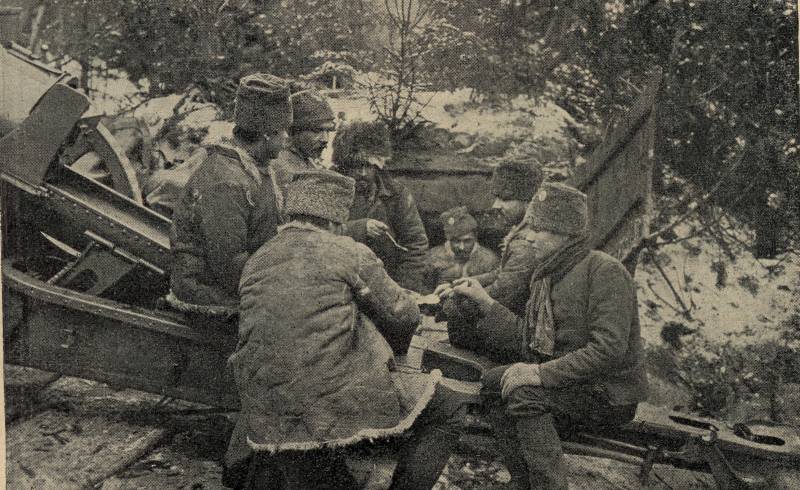
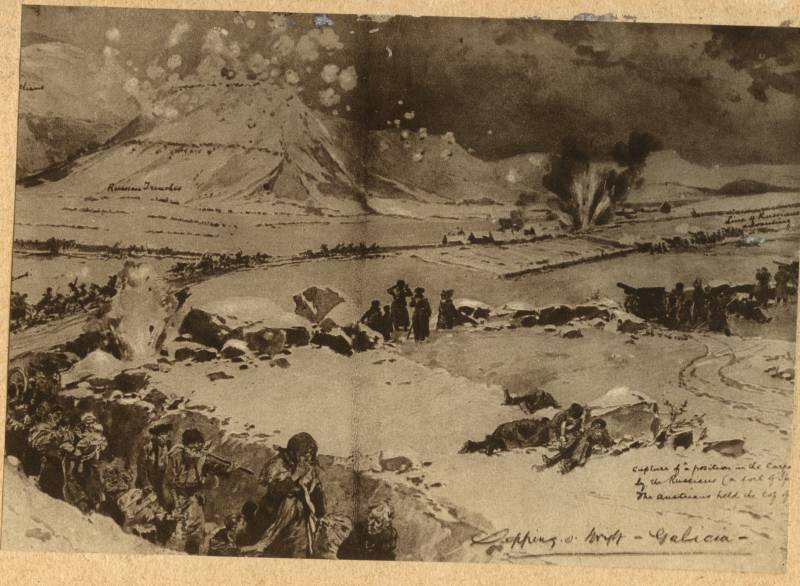
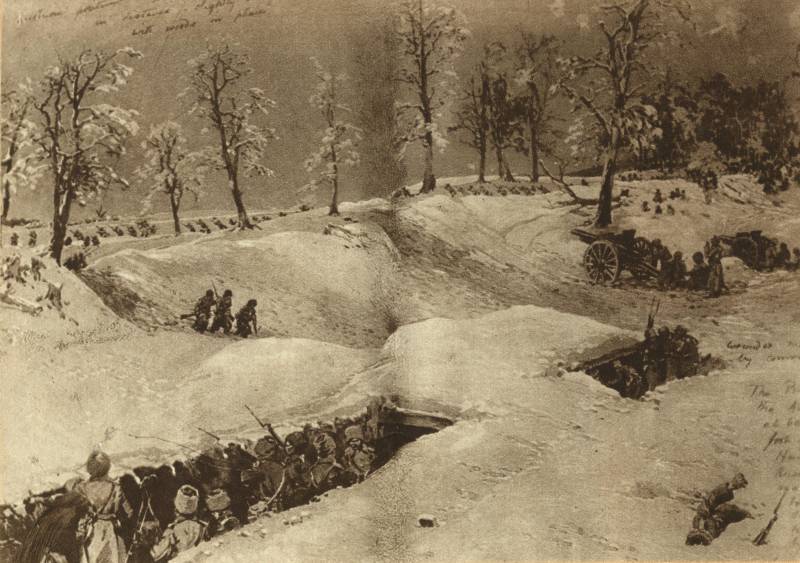
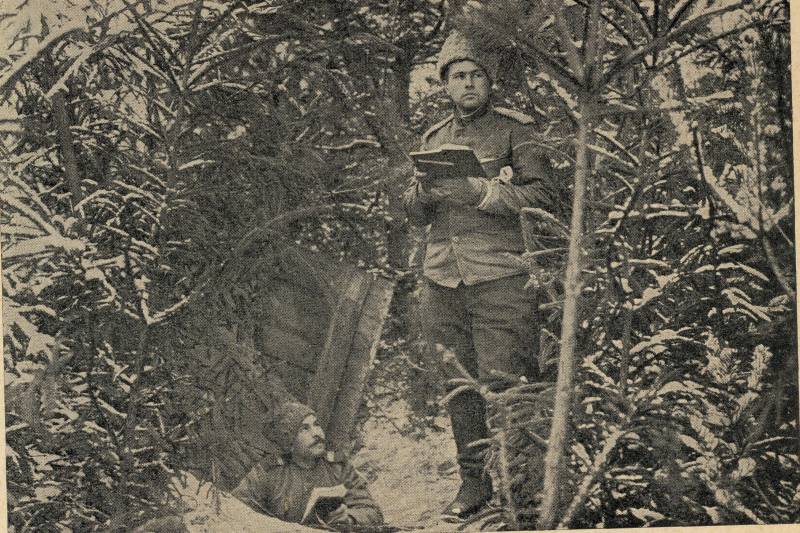
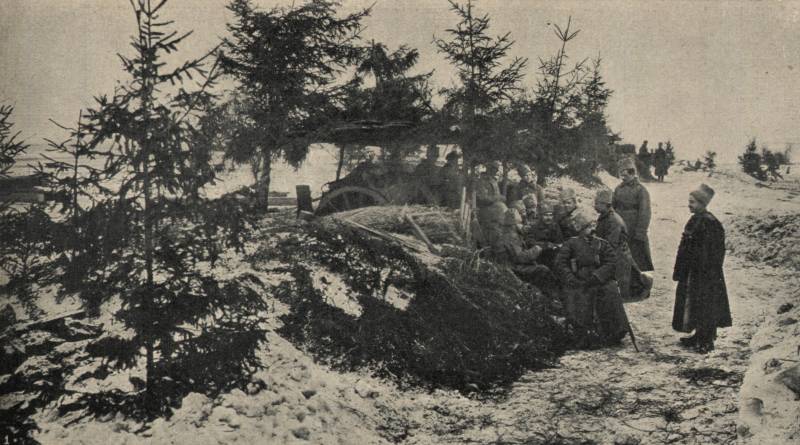
Information